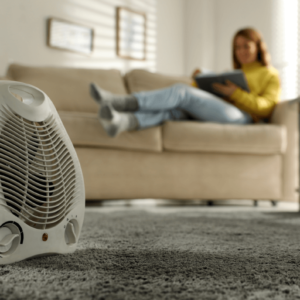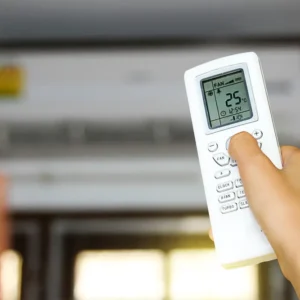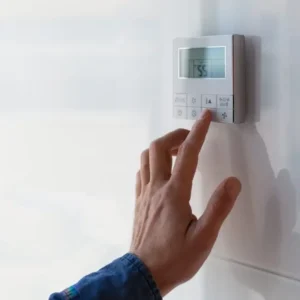Have you ever opened your heating bill in the middle of winter and felt a chill run down your spine—not from the cold, but from the cost? You’re not alone. Many people in the USA and UK ask the same question: What is the best temperature to set the thermostat in winter to save money, without freezing to death? This guide will give you a practical, expert-backed answer and provide relatable advice that fits the daily lives of families, individuals, and shared households.
Quick Answers to Your Top Questions:
- What’s the best temperature to set the thermostat in winter to save money? Experts recommend 68°F (20°C) when you’re home and awake, and lowering it 7-10 degrees when you’re asleep or away.
- Can I save money just by adjusting my thermostat? Yes! The U.S. Department of Energy reports you can save up to 10% a year on heating by lowering your thermostat 7-10°F for 8 hours a day.
- Is 68°F too cold? Not if you layer up smartly. It’s a balance between comfort and cost.
- How does this relate to other saving strategies, like groceries? Just like with groceries, being intentional and smart with your thermostat can cut costs significantly without sacrificing your quality of life. (See: Ways to Save Money on Groceries Without Coupons)
Why Your Thermostat Setting Matters More Than You Think
Heating your home accounts for nearly half of your total energy bill during the winter months in both the USA and the UK. With energy prices remaining unpredictable and many households feeling the pinch, knowing the right thermostat setting can directly impact your bank balance.
Setting your thermostat too high not only burns unnecessary fuel or electricity, but it also leads to higher monthly bills and less efficient energy usage. It’s like spending more on branded groceries when the store-brand option is just as good.
The Magic Number: 68°F (20°C)
According to the U.S. Department of Energy and British energy authorities, 68°F (20°C) is the sweet spot for winter thermostat settings when you’re at home and active. It strikes a balance between comfort and energy efficiency.
Why 68°F Works:
- Keeps indoor humidity manageable, reducing mold risk
- Comfortable with warm clothing and socks
- Reduces energy use significantly over time
For every degree you lower your thermostat below 70°F (21°C), you can save about 1-3% on your heating bill. Those savings add up fast over a full winter.
When You’re Asleep or Away: Drop It Down to 60-64°F (15-17°C)
Your body naturally generates heat while you sleep, especially when tucked under a cozy duvet. So, lowering the temperature during the night or when you’re out for work or errands makes sense.
Practical Tip:
Use a programmable or smart thermostat to automate the temperature drop. In the UK, brands like Hive and Nest are popular, while in the US, Ecobee and Google Nest work well.
Maximize Savings With These Thermostat Habits
Even the best temperature setting won’t save you money if your heating habits are wasteful. Here’s how to be thermostat-smart:
1. Layer Up Before Turning Up
Instead of cranking up the heat, wear thermals, socks, and use throws or blankets while sitting. Heat yourself first, then your space.
2. Zone Heating
Only heat the rooms you use. Close vents in unused areas, and use draft blockers to keep warm air where it’s needed.
3. Use Curtains Wisely
Open them during the day to let in the sun’s heat and close them at night to keep cold air out.
4. Seal Drafts and Insulate
A poorly insulated home leaks warm air. Check windows, doors, and lofts for leaks. Inexpensive draft excluders and weather stripping can save hundreds annually.
How It Relates to Other Household Savings: Think Grocery Budgeting
This might surprise you, but saving money on heating is a lot like finding ways to save money on groceries without coupons. It’s about being strategic, intentional, and consistent.
Just like meal planning and switching to store brands helps trim your food bill, using a programmable thermostat and layering clothing helps cut your heating costs.
Read Also: 10 Proven Ways to Save Money on the Gas Bill
Both strategies revolve around smart decision-making that doesn’t require sacrifice—just awareness.
Adjust for Personal Comfort and Health Needs
Some people, such as the elderly, babies, or those with health issues, may need slightly higher temperatures. That’s okay. Consider these hacks:
- Use space heaters in specific rooms instead of heating the entire home
- Wear heated socks or use electric throws
- Use hot water bottles to stay warm without running the boiler overnight
Best Thermostat Practices by Region: USA vs. UK
United States:
- Central heating systems are more common
- Smart thermostats are eligible for rebates in some states
- Energy bills can spike due to electric heating in apartments
United Kingdom:
- Radiator-based systems dominate
- Thermostatic radiator valves (TRVs) can control room temperatures individually
- Boiler efficiency plays a big role—servicing your boiler annually helps
Frequently Asked Questions
1. Should I leave my thermostat on all day?
No. It’s more efficient to lower the temperature when you’re not home or asleep. Smart thermostats automate this efficiently.
2. Is it cheaper to use a space heater in one room?
If you’re only using one room, yes. But avoid using multiple space heaters—they’re less efficient than central heating.
3. How much can I save annually?
Families in the USA and UK have reported annual savings between $100-£800 just by following these thermostat habits and insulating their homes.
4. Does turning off the heat at night make pipes freeze?
If you live in areas where temperatures drop below freezing, don’t go lower than 60°F (15°C) to prevent pipe damage.
Conclusion: Small Tweaks, Big Savings
By setting your thermostat to 68°F (20°C) when home and awake, and lowering it when asleep or away, you can save significantly on your heating bills, without sacrificing comfort.
Pair this with other smart choices—like layering clothes, sealing drafts, and using programmable thermostats—and your savings multiply. Just like learning ways to save money on groceries without coupons, thermostat control is about using your resources wisely.
Take action today: Check your thermostat, program your settings, seal your drafts, and start saving. Your wallet—and your energy conscience—will thank you.





